تعليمات التحميل
التعليمات بصيغة PDF للطباعة
To assemble the SPACCER you will need the following tools and aids
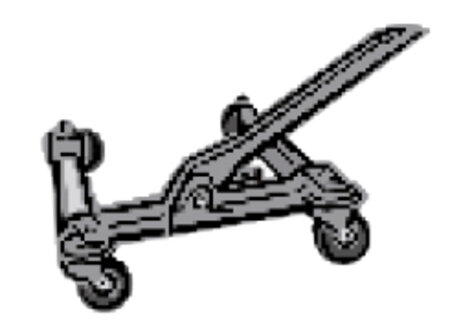


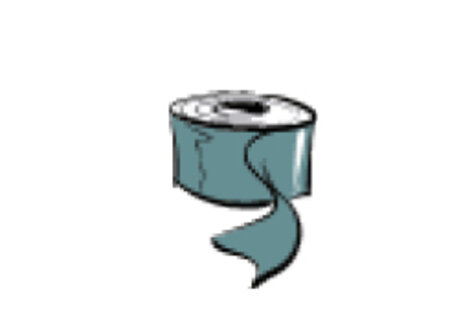
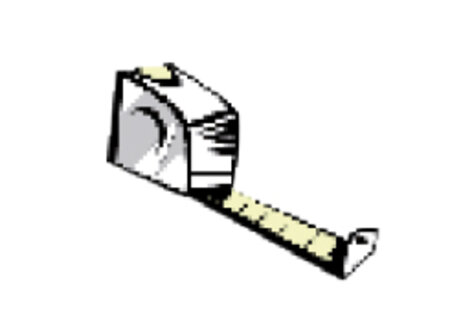



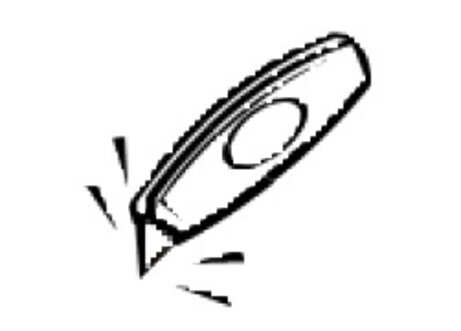
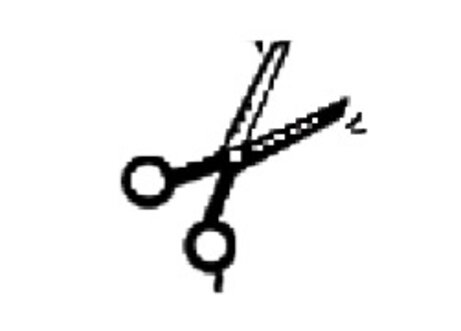
Symbol legend




I. Important product and usage information
We congratulate you on purchasing the SPACCER lift system. A SPACCER is a spiral ring made of high-strength special aluminum to raise your vehicle. With a SPACCER you can raise vehicles of all brands and models up to 48mm. A SPACCER raises one wheel of your car by 12mm. You can use the lift kit on the front axle, the rear axle or on the front and rear axle. Dimensions of the lift kit The TÜV specification for the lift kit results from the difference between the vehicle height stated in the vehicle registration document and the height measured at the top edge of the roof after the conversion. In order to achieve comparable measured values, the influences of the wheel/tire combination, shock absorber type and condition, tank filling and previous standing height tolerances must be taken into account. Because of these possible external influencing factors, there may be deviations in the actual level of elevation. Lift kit SPACCER produces many different parts for models from a wide range of manufacturers, some of which are very similar. The installation and use of such parts in vehicles that are not intended for this purpose can cause serious damage. Therefore, before installation, compare the TÜV test report with the vehicle registration document to see whether SPACCER has been tested for your vehicle and whether all designations are correct and whether the SPACCER is intended for your vehicle. This also applies to wheels and tire sizes not approved by the manufacturer. Please pay close attention to the information on vehicle type and design in our TÜV test report. If you are not sure whether the product offered to you is suitable for your vehicle type, please consult SPACCER or a qualified vehicle workshop (authorized dealer). SPACCER, which were specially manufactured according to the chassis number, are generally excluded from exchange or return.
II. Instructions for assembly
SPACCER are manufactured under constant quality control and strict care, but even high-quality products can become defective. To prevent product damage, please note the following instructions: Do not overload the vehicle nor exceed the axle loads specified by the manufacturer or TÜV. Avoid unusual and aggressive driving style with increased use of the vehicle. SPACCER are intended exclusively for operation in road-legal vehicles that comply with the applicable legal regulations . Any other purpose is strongly discouraged. Only have the installation carried out in authorized or specialist workshops. Only they have the appropriate specialist knowledge and tools. We assume no liability for non-compliance. 1. Before installation Please check the delivery for completeness Please compare the delivered items with the delivery note Please compare the contents of the delivery with the TÜV test report Also compare the TÜV test report with the vehicle documents Vehicles with hybrid and hydrogen - or electric drive may only be raised in specialist companies or specialist workshops. Please refer to the workshop manual. Please pay attention to the lifting points for lifting the vehicle on all vehicles, especially those with electric drives. Please refer to the workshop manual. Please check whether the appropriate tools are available for installation. You can find a list of the required tools here. If there are any discrepancies or discrepancies, please contact your seller. Please measure all dimensions important for the conversion, in particular the remaining spring travel (see Chapter IV). If your vehicle has a towing hitch, please make sure that the upper edge of the After raising the trailer hitch, it does not exceed the legally required height of 420mm (Figure 1) and does not fall below 350mm.

2. During installation
Work according to the vehicle manufacturer's specifications or workshop manual. Please note all instructions in the installation instructions. Please check all dismantled parts for functionality. Replace defective original parts with new original parts. Only use suitable tools for assembly/disassembly. Please do not additionally process any parts or make them suitable. except for the mounting aid rubber bead of the rubber on the suspension strut bearing (see Figure 2). If products do not fit, stop installing or removing them. Installing products in unsuitable vehicles can cause serious damage. In this case, please contact your dealer and describe the problem. Have the vehicle documents or technical documents ready so that you can answer any questions that may arise. Please make sure that after the conversion there are no more parts left than you replaced. The rubbers of the suspension strut bearings on the rear axle of some vehicles are equipped with an assembly aid. This is to ensure that the rubber of the suspension strut bearing does not slip off the spring during production. This does not function when the vehicle is in operation and can therefore be removed. If your vehicle has such a rubber bead as a mounting aid, you must remove it before installing the SPACCER (see Figure 2).

3. After elevation
Only use tightening and fastening values specified by the vehicle manufacturer. Measure all dimensions that are important for the lift. Check and correct the following if necessary: The correct fastenings of all loosened and mounted parts. The freedom of movement of the wheel/tire combination (loaded/unloaded). The braking system and the setting of the load-dependent brake force regulator The freedom of movement to all brake parts and brake hoses (at all steering angles) The adjustment of the headlights The freedom of movement to all axle and steering parts (at all steering angles) The adjustment of the level control Axle settings to original values Non-compliance with these testing and adjustment work can lead to the failure of vehicle systems and lead to serious damage.
4. Test drive
Installing SPACCER can improve the driving behavior of your vehicle. Rolling movements can be reduced thanks to the optimized residual spring travel. This makes your vehicle safer to drive at the limit. If you notice unusual driving behavior in your vehicle, this may be an indication that the installed SPACCER is not suitable for your vehicle or that errors were made during installation. If this is the case, please have your vehicle checked at a specialist workshop immediately. Failure to do so can lead to serious damage.
The installation and removal of SPACCER can lead to damage if not handled correctly and professionally. For this reason, SPACCER must be installed by a specialist automotive company (master craftsman, authorized dealer, etc.). The assembly should not be carried out by private individuals!
III. Important information for experts and test engineers (aaSmt / aaPmt)
The following information is used by TÜV, DEKRA, GTÜ or other European and international organizations to make registration as easy as possible for them:
- Testing basis
Check the lift kit according to VdTÜV leaflet 751/II.1, assessment of vehicle lift kit, appendix II. - Strength test
The strength and requirements for our lifting system can be found in our test report no. 02/0149-02, 03/0149-02, 04/0149-02, 13/0029-00 and 13/0111-00 on a strength test of spring bases as a basis for vehicle acceptance according to §21 or §19(2) StVZO. - Residual spring travel
Be sure to measure the remaining spring travel when stationary and in the extended state (see leaflet “Determination of residual spring travel”). This must still be at least 4 cm after conversion with the SPACCER system (guideline according to VdTÜV bulletin II.4.3). - Driving behavior
Since the characteristic curve of the spring is not changed, the driving behavior does not change either. The spring is simply underlaid with the SPACCER® so that the car is higher. The pressure of the spring and suspension remains unchanged despite the lift, as long as there is a remaining spring travel of at least 4cm. - Track setting
As a rule, the track setting is not changed because only the spring is underlaid with SPACCER®. The spring/shock absorber unit remains unchanged. It is still necessary to check the track after installation for safety reasons. - Light test
Please check the headlight setting after the lift. - Spring Travel
Pro SPACCER a spring travel limiter is installed in the piston rod, so the original spring travel is retained. - Assembly
Each delivery includes detailed assembly instructions in which each step for installing SPACCER® is described in detail. Shock absorbers and springs must be removed or installed according to the original manual.
IV. Residual spring travel
Why is there a remaining spring travel?
Every vehicle has a legally required minimum spring travel of 4cm ex works. In around 98% of all vehicles, this suspension travel is longer than the legal minimum requirement and can therefore be used to install a lift kit. The automobile manufacturer has therefore already technically provided for the possibility of a lift.
What is the remaining spring travel?
When the vehicle is compressed, the piston rod is in the damper. (Figure 3) When the vehicle is fully extended (Figure 4), you get the suspension travel F. The legal minimum requirement for this suspension travel is 4cm, but in most cases it is significantly longer and forms the basis for a lift. If a lift kit is installed and the vehicle is fully extended (Figure 5), the suspension travel F must still meet the legal minimum requirement of 4cm. In the compressed state (Figure 6) there is no difference in the damper and spring. Therefore, the characteristic curve of the spring and thus the suspension comfort remains the same. If you want to install SPACCER, you must ensure before installation that the spring travel between compression and rebound (residual spring travel) will be greater than 4cm even after the lift has been raised.




Determine remaining spring travel / maximum possible lift
The maximum height of a lift is limited by the remaining spring travel. For TÜV registration according to §21 or §19(2) StVZO, a residual spring travel of at least 4cm is required after raising the bike. Maintaining the remaining spring travel guarantees a problem-free lift. This means that brake hoses, drive shafts, axles and chassis remain within the tolerance range tested by TÜV (TÜV data sheet 751, appendix II).
To determine the remaining spring travel you need:




How to determine the remaining spring travel:
Mark the center of the wheel with the adhesive tape and measure vertically to the edge of the fender. While at rest, measure the distance between the marked center of the wheel and the center of the fender (Figure 7) and note the value. Raise the body using a jack or a lifting platform. The vehicle is now fully extended and the wheels are not in contact with the ground (Figure 8). Now measure the distance between the center of the wheel and the center of the fender again. Determine the total height of the SPACCER to be installed (12mm / SPACCER , 15mm / SPACCER with rubber profile) and calculate the remaining spring travel according to the formula: distance extended - distance compressed - height SPACCER
Residual spring travel dimensions
IMPORTANT! For a correct measurement result, please first measure the distance compressed and then the distance extended.
| Front axle | rear axle | |
|---|---|---|
| distance compressed | ||
| Distance feathered out | ||
| Minimum remaining spring travel | ||
| Max. lift | ||
If the minimum remaining spring travel is not maintained, the remaining spring travel can be increased using dome plate washers (Figure 9). Assemble this between the piston rod and the dome bearing as required. This means the remaining spring travel is extended for more driving comfort. If this spring travel is not enough, we offer an optional piston rod extension.
To ensure that the measurement result is not distorted, please always measure the distance in the compressed state first. The vehicle must not be lifted with a lifting platform or jack beforehand!
Determine remaining spring travel / maximum possible lift


The determined remaining spring travel must be more than 40mm. If this value is not reached, only use as many SPACCER until the remaining spring travel is maintained, use longer shock absorbers or install a SPACCER piston rod extension. If the value is higher, continue with Chapter V. Calculation example of remaining spring travel / maximum possible lift
| Distance extended (Fig. 8) | 49,0 cm |
| Distance compressed (Fig. 7) | – 39,0 cm |
| Legally required remaining spring travel | – 4,0 cm |
| Max. possible lift | 6,0 cm |
|---|
In the example above, a 12 / 24 / 36 / 48mm SPACCER lift kit or SPACCER with optionally available rubber profile can be installed. The rubber profile is for an additional height of 3mm per SPACCER. If the remaining spring travel is less than 4cm, we recommend making use of the remaining thread by installing washers (Figure 9) to optimize the remaining spring travel.

Before you loosen the shock absorber, measure how much thread is free at the top. Alternatively, you can then install washers around the free dimension. This increases the remaining spring travel (more driving comfort)
V. Prepare the shock absorber
SPACCER are placed above or below the spring. The shock absorber must be prepared for this.
To prepare the shock absorber you need



Make sure the vehicle's parking brake is active. Raise the vehicle using a lift or jack (Figure 10). Then dismantle the wheels where you want to install SPACCER® (Figure 11).


If you have the option of using a spring compressor to compress the spring when installed, the shock absorber does not have to be removed for SPACCER installation. However, dismantling makes installation easier in any case and is therefore recommended.
The spring can be tensioned when installed
Suspension strut removal not necessary, continue with Chapter V a
لا يمكن شد الزنبرك عند تركيبه.
Suspension strut removal required, continue with Chapter V b
Whether the spring can be tensioned with a spring compressor when installed depends on the type of vehicle used and the spring compressor used. To avoid damage to the vehicle, if in doubt, remove the shock absorber.
إذا كان من الممكن شد الزنبرك عند تركيبه، فعليك أيضًا التأكد من بقاء لوحة محمل القبة في سيارتك في موضعها حتى عند ضغط الزنبرك. إذا لم يكن من الممكن ضمان ذلك، تابع الفصل الخامس ب.
V أ) يمكن تثبيت الزنبرك بالشد
باستخدام ضاغط زنبركي، قم بشد الزنبرك (الشكل 12). تأكد من بقاء لوحة حمل القبة في موضعها عند الشد.

أدخل SPACCER في الموضع المحدد كما هو موضح في الورقة التكميلية "Shock Strut Exploded Draw" المناسبة لسيارتك.
اعتمادا على نوع السيارة، يجب تثبيت SPACCER® فوق أو تحت الزنبرك. يرجى الرجوع إلى الورقة التكميلية "عرض الدعامة الزنبركية المنفجرة" لمعرفة الموضع الدقيق.


يتم تثبيت SPACCER® مسبقًا بشريط كوسيلة مساعدة للتجميع (الشكل 15). ضع SPACCER® على الزنبرك في الأعلى (أو في الأسفل حسب السيارة). يتم وضع الغطاء النهائي على SPACCER® في نهاية الربيع لمنع التجويف من الالتواء. ثم قم بإرخاء الزنبرك باستخدام ضاغط الزنبرك. تأكد من أن SPACCER® يتناسب بشكل مريح مع الزنبرك وعلى لوحة القبة (عند تثبيته في الأعلى، الشكل 14) أو دعامة الزنبرك (عند تثبيته في الأسفل، الشكل 13) (الشكل 16).


لتسهيل التجميع، يمكن لصق العديد من SPACCER® معًا في المصنع. يمكن فصلها بسهولة عن بعضها البعض مع القليل من النفوذ.
V ب) لا يمكن شد الزنبرك عند تركيبه
قم بفك ممتص الصدمات الموجود على جميع العجلات التي ترغب في رفعها وفقًا لتعليمات الشركة المصنعة.

ضع SPACCER® في الموضع المحدد كما هو موضح في الورقة التكميلية "موضع التثبيت في ممتص الصدمات" المناسب لسيارتك.
لتجميع وتفكيك ممتص الصدمات، تأكد من استخدام الوثائق المعتمدة من قبل الشركة المصنعة فقط.


يتم تثبيت SPACCER® مسبقًا بشريط كوسيلة مساعدة للتجميع (الشكل 20). تأكد من أن SPACCER® تقع بشكل صحيح. يتم وضع الغطاء النهائي على SPACCER® في نهاية الربيع لمنع التجويف من الالتواء. تثبيت ممتص الصدمات بما في ذلك SPACCER® مرة أخرى في السيارة. تأكد من أن SPACCER® يتناسب بشكل مريح مع الزنبرك وعلى لوحة القبة (عند تثبيته في الأعلى، الشكل 19) أو دعامة الزنبرك (عند تثبيته في الأسفل، الشكل 18) (الشكل 21). يمكن أن تظل أداة التجميع في مكانها بعد التجميع.


اعتمادا على نوع السيارة، يجب تثبيت SPACCER® فوق أو تحت الزنبرك. يرجى الرجوع إلى الورقة التكميلية "عرض الدعامة الزنبركية المنفجرة" لمعرفة الموضع الدقيق.
السادس. أدخل محدد السفر الربيعي
اعتمادًا على نوع ممتص الصدمات، يتم استخدام محددات حركة زنبركية مختلفة. إما أن يشكل الزنبرك وممتص الصدمات وحدة، أو يتم تركيبهما بشكل منفصل عن بعضهما البعض. اختر هيكل المحور الخاص بك:
ممتص الصدمات/زنبرك مدمج (ماكفيرسون)

ممتص الصدمات/زنبرك منفصل عن الآخر

VI أ) استخدم محدد حركة الزنبرك مع ممتص الصدمات/الزنبرك المدمج (MacPherson)
من أجل الحد من حركة الزنبرك مرة أخرى إلى الطول الأصلي بعد الرفع، يجب تركيب محددات إضافية لحركة الزنبرك. وهذا يعني أن السفر المعلق يظل دون تغيير بسبب الارتفاع. أدخل محددات الحركة في الموضع المحدد في الشكل 24. يمكنك ببساطة تثبيتها في قضيب المكبس بدون أدوات. إذا لزم الأمر، يمكن أيضًا ربط محددات السفر الزنبركية معًا. يتم تضمين محددات السفر الربيعية المناسبة مع كل عملية توصيل.

محدد سفر ربيعي واحد لكل SPACCER
يجب إدراج محدد سفر زنبركي واحد لكل SPACCER® المُدرج (الشكل 25 إلى 28). في الرسم التوضيحي أدناه، يتم إدراج SPACCER® في الأعلى. قد يختلف موضع التثبيت في سيارتك.




لا ينبغي تركيب محددات سير نظام التعليق في المركبات المزودة بزنبركات خفض ملحقة ما لم يتم تقصير محددات سير نظام التعليق الأصلي.
VI ب) أدخل محدد حركة الزنبرك مع فصل الزنبرك/ممتص الصدمات عن بعضهما البعض
من أجل الحد من حركة الزنبرك مرة أخرى إلى الطول الأصلي بعد الرفع، يجب تركيب محددات إضافية لحركة الزنبرك. وهذا يعني أن السفر المعلق يظل دون تغيير بسبب الارتفاع. للقيام بذلك، استخدم المسمار الممتد المتضمن في التسليم (قم بتقصيره إذا لزم الأمر، الشكل 30)، وصامولة التثبيت وصامولة القفل بحلقة لتوصيل محددات الحركة الزنبركية الإضافية بالجسم (تأكد من ثقب الجسم مسبقًا - الشكل 29) .


باستخدام المكسرات برشام
لتركيب محددات الحركة الزنبركية، استخدم صواميل البرشام المتوفرة (الشكل 31). تجمع هذه بين نوعين من التثبيت: التثبيت الأعمى والتوصيل اللولبي (الشكل 32). وهذا يجعل من الممكن ربط محددات الحركة الزنبركية بالعناصر الهيكلية ذات الجدران الرقيقة نسبيًا للجسم بطريقة مقاومة للالتواء.
لا ينبغي تركيب محددات حركة التعليق في المركبات المزودة بزنبركات خفض ملحقة ما لم يتم تقصير محددات حركة التعليق الأصلية.
قبل إزالة الزنبرك، ضع علامة على الجزء العلوي والسفلي بحيث يمكن إعادة تثبيته في الموضع الصحيح.
 |
||||||
| خيط | قطر ثقب الحفر | منطقة لقط | قطر الرأس (د) | ارتفاع الرأس (أ) | نصف قطر الكم (C) | ارتفاع الكم (ب) |
|---|---|---|---|---|---|---|
| M8 | 11,0 - 11,1mm | 1,5 - 4,0mm | 13,5mm | 1,5mm | 10,9mm | 17,5mm |

إصلاح الجوز برشام
حفر حفرة في الجسم (الشكل 29). قم بربط المسمار M8 في صامولة السحب (الشكل 33) وقم بقفله باستخدام صامولة M8 (الشكل 34).


B1 - محدد السفر الزنبركي الأصلي مثبت بالجسم
استبدل المسمار المستخدم لتثبيت محدد السفر الأصلي بالمسمار الممتد. قم بتركيب محددات السفر الإضافية بين الجسم ومحدد السفر الأصلي (الشكل 39). ثم ثبت ذلك باستخدام صامولة البرشام المرفقة وصامولة القفل بالغسالة (الشكل 41). إذا كان قطر المسمار المرفق لا يتناسب مع محدد السفر الأصلي، فقد تضطر إلى ثقبه (الشكل 40). قد يختلف موضع التثبيت في سيارتك. يجب إدراج محدد سفر زنبركي واحد لكل SPACCER® المُدرج (الشكل 35 إلى 38). في الرسم التوضيحي أدناه، يتم إدراج SPACCER® في الأسفل.







B2 - محدد السفر الزنبركي الأصلي موصول أو مثبت بالجسم
يتم تثبيت محددات حركة الزنبرك الإضافية بالنسبة لمحدد حركة الزنبرك الأصلي المثبت في الجزء السفلي من الجسم عند نقطة التوقف النهائية (الشكل 36) باستخدام المسمار الممتد وجوز البرشام وصمولة القفل مع الغسالة (الشكل 48). للقيام بذلك، قم بحفر المحطة النهائية مسبقًا إذا لزم الأمر (الشكل 47). يجب إدراج محدد سفر زنبركي واحد لكل SPACCER® المُدرج (الشكل 42 إلى 45). في الرسم التوضيحي أدناه، يتم إدراج SPACCER® في الأسفل. قد يختلف موضع التثبيت في سيارتك.







سابعا. تركيب SPACCER لنوابض الأوراق
قبل التثبيت (لا ترفع السيارة بعد)
ضع علامة على موضع التثبيت الأصلي للوحة شد الزنبرك قبل الإزالة (الشكل 49). لاحظ المحور المركزي للزنبرك الورقي مع مسمار القلب لوضعه على المحور (الشكل 50). قبل إزالة الزنبرك الورقي، تحقق مما إذا كانت المشابك الزنبركية الجديدة ملائمة للطول (الطول الأصلي بالإضافة إلى تعديل الارتفاع)، والعرض ونصف القطر. إذا لزم الأمر، اطلب مشبك زنبركي ملحق مناسب.




ارفع السيارة باستخدام منصة الرفع. قم بفك صواميل المشابك الزنبركية (العرائس). قياس قطر الترباس القلب الأصلي (الشكل 51) والتحقق من ملاءمة الترباس القلب SPACCER (الشكل 52). إذا لزم الأمر، يجب استبدال هذا بآخر مناسب تمامًا. تتوفر براغي القلب بأحجام مختلفة بشكل اختياري كملحقات.
تثبيت SPACCER لنوابض الأوراق
مركز SPACCER® على الترباس القلب من ورقة الربيع. ضع لوحة شد الزنبرك في الموضع الأصلي المحدد مسبقًا. تأكد من أن الترباس القلب SPACCER يقع بشكل صحيح في مركز المحور (الشكل 53). استخدم المشابك الزنبركية الممتدة (العرائس) ثم قم بربطها مرة أخرى على لوحة شد الزنبرك. يرجى ملاحظة معلومات الشركة المصنعة حول عزم الدوران (دليل ورشة العمل).

اتبع تعليمات الشركة المصنعة لتثبيت وإزالة النوابض الورقية في سيارتك.
مشبك ربيعي كبير الحجم
ابحث عن مشبك زنبركي مناسب (Briden).
يتم تحديد المشابك الزنبركية المدرجة في نطاق التسليم بناءً على رقم الهيكل لتتناسب مع الزنبرك الورقي الخاص بها ويتم تضمينها. إذا، كما هو متوقع، لا تناسب هذه النوابض الورقية في سيارتك، فلديك خيار استبدالها بسهولة. للقيام بذلك، أدخل أولاً الشكل المناسب للمشبك الزنبركي في الجدول بالصفحة التالية باستخدام الشكل 54.

في الخطوة 2، قم بقياس عرض المشبك الزنبركي (الشكل 55). أدخل هذا في الجدول، مقربًا إلى أقرب ملليمتر (على سبيل المثال 61 ملم - وليس 61.75 ملم). في الخطوة 3، قم بقياس سمك خيط المشابك بالملليمتر الكامل. أقطار الخيوط الشائعة للمشابك الزنبركية هي 8 مم، 10 مم، 12 مم، 14 مم، 16 مم، 18 مم، 20 مم، 22 مم و24 مم بخيط M. كخطوة رابعة وأخيرة، أدخل درجة الخيط (درجة) الخيط في الجدول الموجود في الصفحة التالية. تبلغ مسافة الخيط المشترك للمشابك الزنبركية 1.5 مم أو 2.0 مم.

بدل مقاطع الربيع
| المحور الأمامي | المحور الخلفي | |
|---|---|---|
| شكل مقطع الربيع | ||
| البعد مقطع الربيع أ | ||
| البعد مقطع الربيع B | ||
| البعد مقطع الربيع C | ||
| البعد مقطع الربيع D | ||
| البعد مقطع الربيع E | ||
| البعد مقطع الربيع F | ||
| قطر موضوع | ||
| خيط | ||
يتم دائمًا تضمين المشابك الزنبركية المطابقة في نطاق التسليم.
قبل إزالة الزنبرك الورقي، تحقق مما إذا كانت المشابك الزنبركية الجديدة (العرائس) تتوافق مع الأصل في العرض ونصف القطر وما إذا كان طول المشابك الزنبركية أطول من المشابك الزنبركية الأصلية بمقدار الرفع (الشكل 54 والشكل 55 ) .
ثامنا. تركيب SPACCER لنوابض البرميل (زنبركات الضغط المخروطية المزدوجة)
قبل التثبيت (لا ترفع السيارة بعد)
ضع علامة على موضع التثبيت الأصلي للزنبرك الأسطواني قبل إزالته (الشكل 56) وكذلك الجزء العلوي والسفلي. لاحظ التمركز على لوحة الزنبرك الأصلية أو الهيكل، بالإضافة إلى القطر والارتفاع!

ارفع السيارة باستخدام منصة الرفع. قم بفك ممتص الصدمات. قم بفك ممتص الصدمات الموجود على جميع العجلات التي ترغب في رفعها وفقًا لتعليمات الشركة المصنعة. تحقق من ملاءمة وقطر SPACCER® في لوحة الزنبرك (الشكل 57). أدخل SPACCER® مركزيًا في دليل الزنبرك في الأسفل وفي منتصف الجسم في الأعلى (الشكل 58). اختياريا، يمكن لصق SPACCER® والجسم معا (لاصق السيليكون).


إذا كان لديك عدة SPACCER، تأكد من أن البراغي المركزية لـ SPACCER تتشابك بشكل صحيح.
تاسعا. تركيب الملف المطاطي
استخدم دائمًا التشكيل المطاطي كمجموعة، أي مقطع مطاطي واحد على يسار ويمين السيارة وفقط مع SPACCER®.
لإدخال الملف المطاطي، تحتاج إلى الأدوات التالية:




تطبيق مادة التشحيمبحيث ينزلق الملف المطاطي بسهولة إلى أخدود SPACCER®، قم بتطبيق مادة التشحيم على طول الأخدود في SPACCER® (الشكل 59) وعلى الجانب المطاطي مع الحلمة (الشكل 60). يمكن استخدام محلول صابون ضعيف أو رذاذ السيليكون لهذا الغرض. تحضير الملف المطاطي. أدر المقطع المطاطي بالساق القصيرة (الشكل 61) نحوك. ثم قم بقطع المقطع المطاطي بزاوية 15 درجة تقريبًا (الشكل 62). يجب ألا يزيد طول القطعة المقطوعة عن 2 سم. وضع وإدراج التشكيل الجانبي المطاطي. ضع التشكيل الجانبي المطاطي بحيث تشير الساق الطويلة للقطاع المطاطي إلى الجزء الخارجي من SPACCER®. ابدأ من الغطاء النهائي (الشكل 63) مع قطع النهاية بزاوية. اضغط تدريجيا على الملف المطاطي في أخدود SPACCER®. تأكد من أن الملف المطاطي لا يتجعد. قطع الزائدة قطع المطاط الذي يمتد على SPACCER® في النهاية باستخدام سكين أو مقص (الشكل 64).






عاشراً: فحص المركبة
بعد تثبيت SPACCER®، قم بتركيب العجلات وخفض السيارة. ثم حرر فرملة اليد. تأكد من تعشيق أحد التروس في ناقل الحركة أو أن ذراع الاختيار الأوتوماتيكي على الوضع "P". تحقق من النقاط التالية: تحقق من محاذاة محور السيارة وقم بتصحيحها إذا لزم الأمر. تصحيح إعدادات المصابيح الأمامية. اعتمادًا على طراز السيارة، قد يلزم إعادة ضبط منظم قوة الفرامل (راجع دليل ورشة العمل). قم بإرفاق ملصق SPACCER® على حاجز الباب

